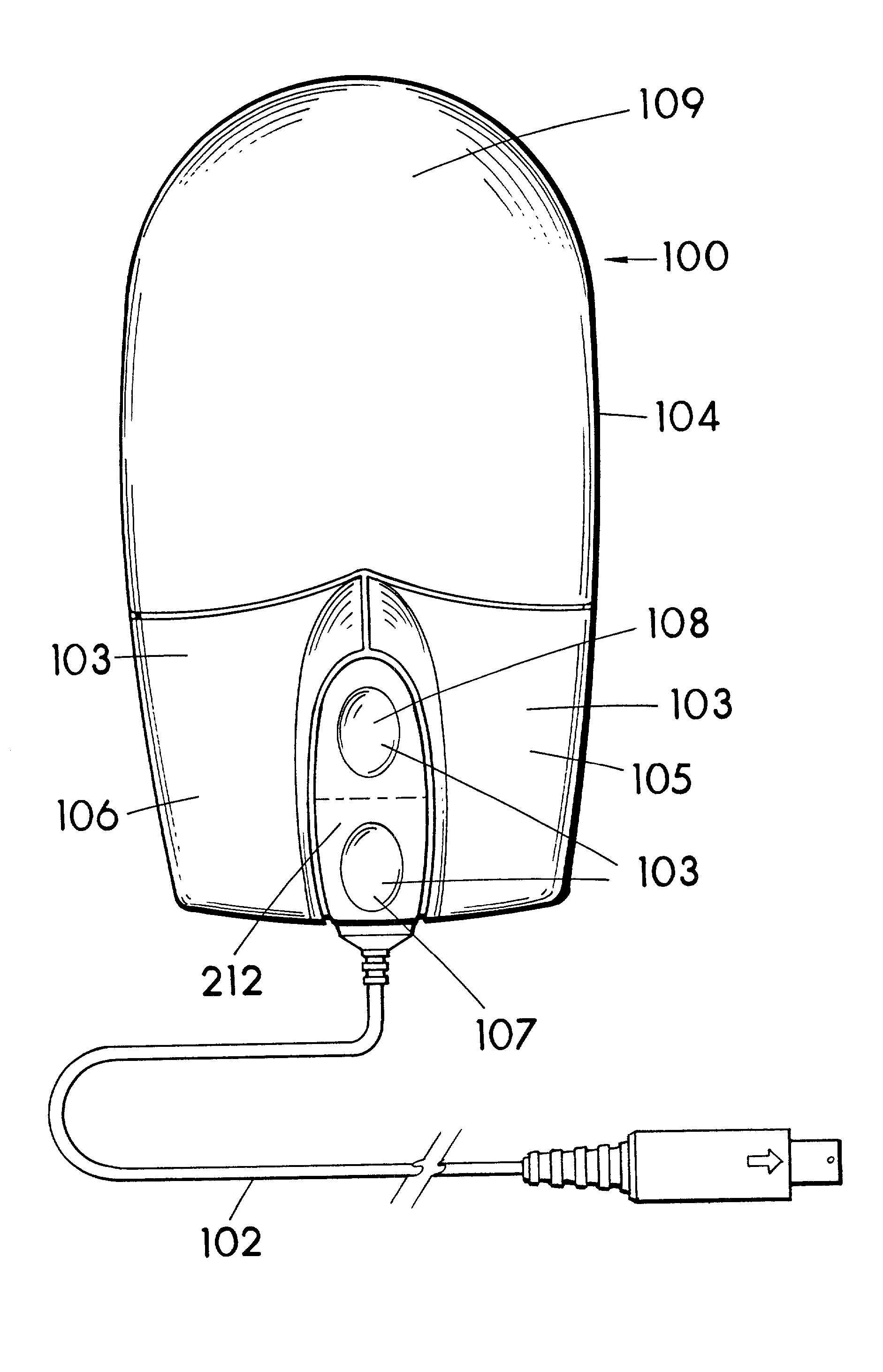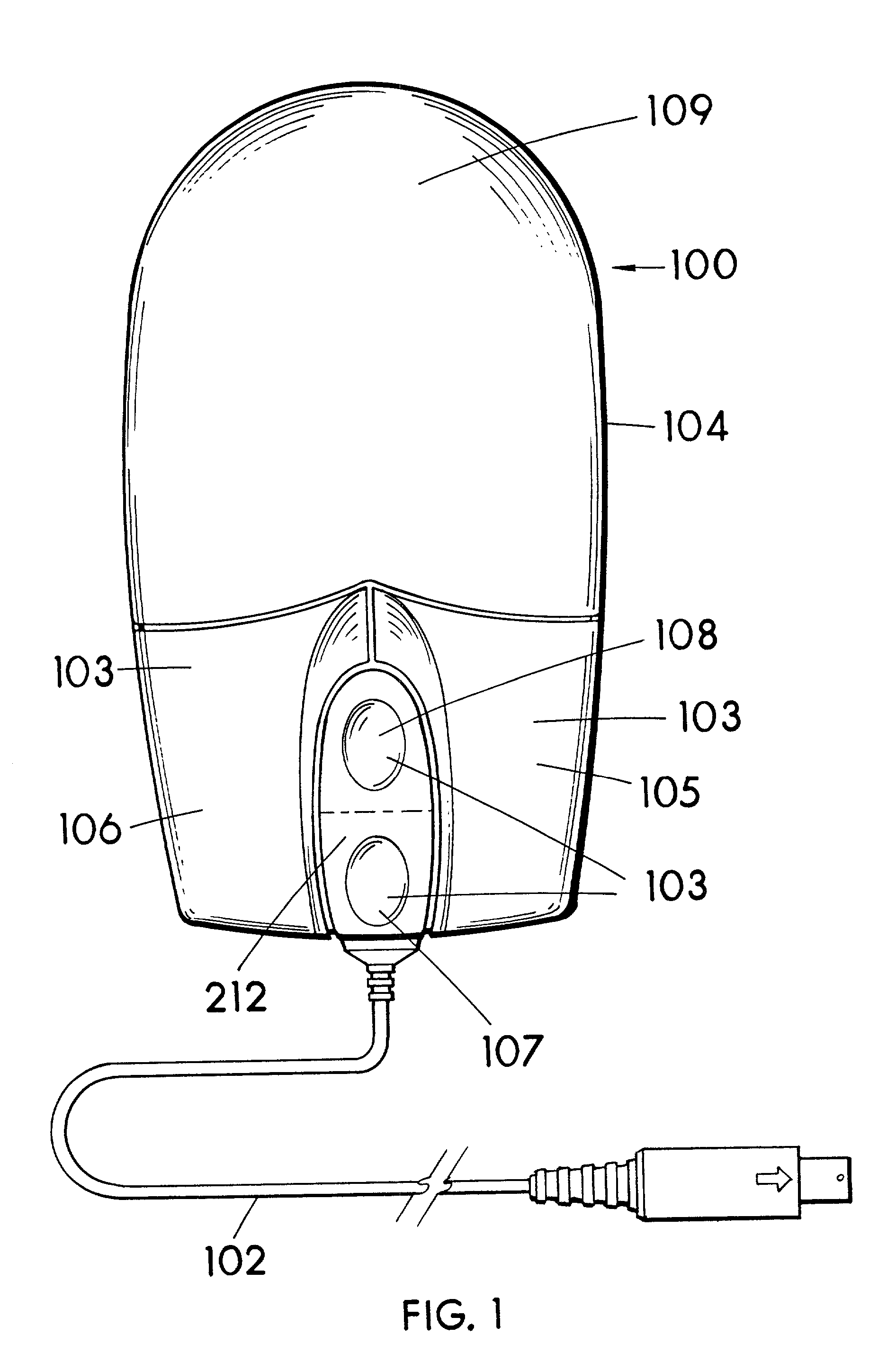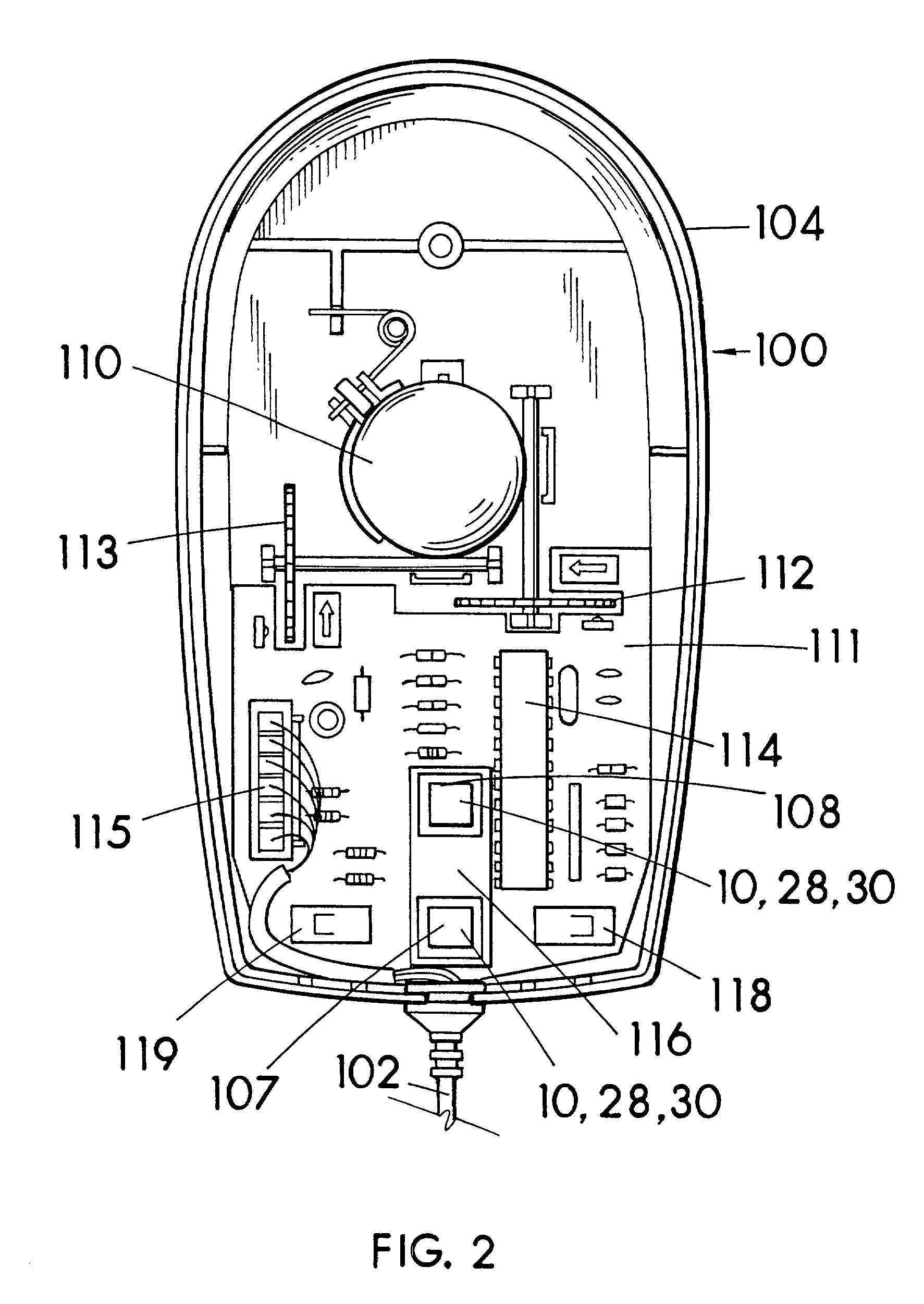Computer mouse with specialized button(s)
a mouse and mouse technology, applied in computing, instruments, electric digital data processing, etc., can solve the problems of not having a very accurate rotatable ball, optical or other surface tracking arrangement for pointing/cursor control, devices without rotatable balls, and other problems, to achieve the effect of optimum rotatable wheel as scroll controller
- Summary
- Abstract
- Description
- Claims
- Application Information
AI Technical Summary
Benefits of technology
Problems solved by technology
Method used
Image
Examples
Embodiment Construction
[0058] In elaboration of the hereinabove details of the Invention and with specific reference to the included drawings, best modes for carrying out the invention will now be further described. FIG. 1 is a top plan view of a desktop operated computer control device, i.e., mouse 100 with a plurality of finger depressible surfaces or buttons 103 on a single depressible plate 212 exposed on a top of the housing 104 top portion, and including a rotatable pointer control ball 110 (FIG. 2). Desktop mouse 100 physically appears as some prior art desktop mice, yet is in accordance with the present invention, although the improved desktop mouse as taught herein can be shaped into different appearances including different button 103 layouts. Desktop mouse 100, with the exception of the electronic circuity particulary for reading scroll buttons 107 and 108, is conventionally structured much like some prior art desktop mice of the type having rotatable pointer control balls, right and left selec...
PUM
 Login to View More
Login to View More Abstract
Description
Claims
Application Information
 Login to View More
Login to View More - R&D
- Intellectual Property
- Life Sciences
- Materials
- Tech Scout
- Unparalleled Data Quality
- Higher Quality Content
- 60% Fewer Hallucinations
Browse by: Latest US Patents, China's latest patents, Technical Efficacy Thesaurus, Application Domain, Technology Topic, Popular Technical Reports.
© 2025 PatSnap. All rights reserved.Legal|Privacy policy|Modern Slavery Act Transparency Statement|Sitemap|About US| Contact US: help@patsnap.com



